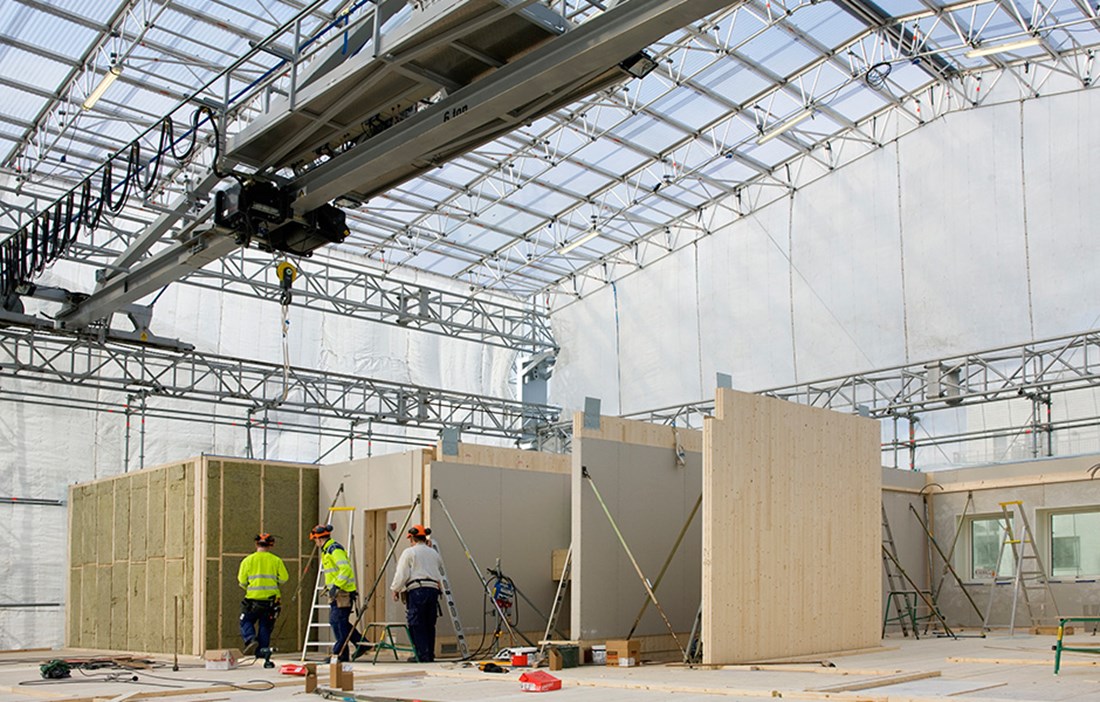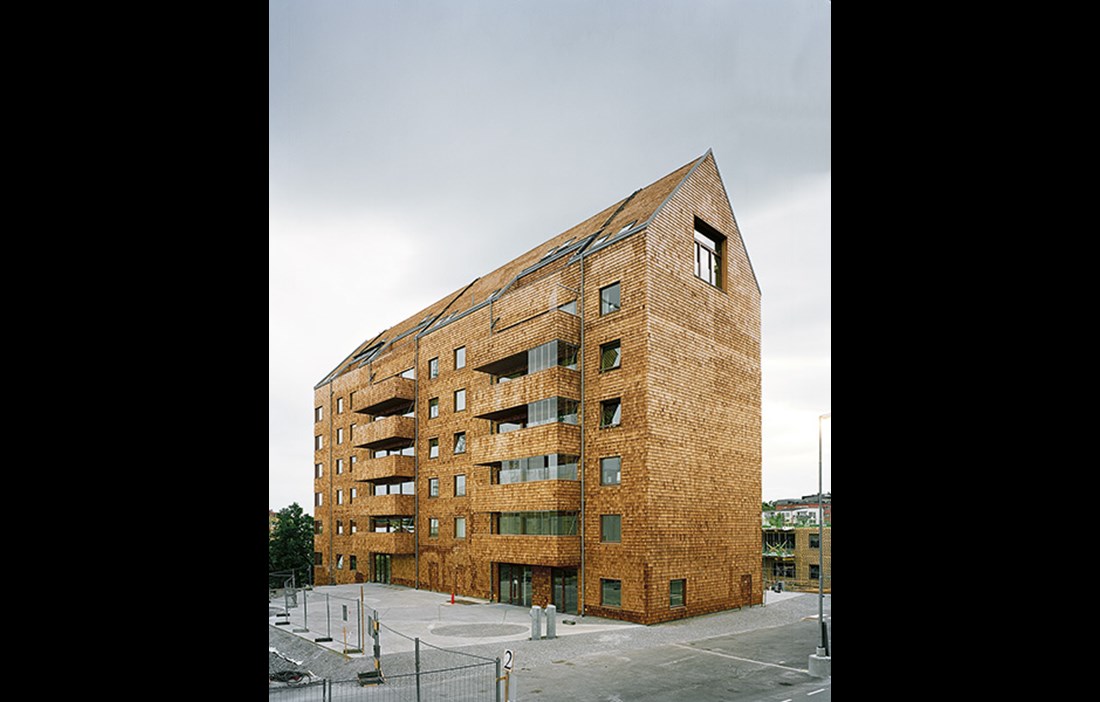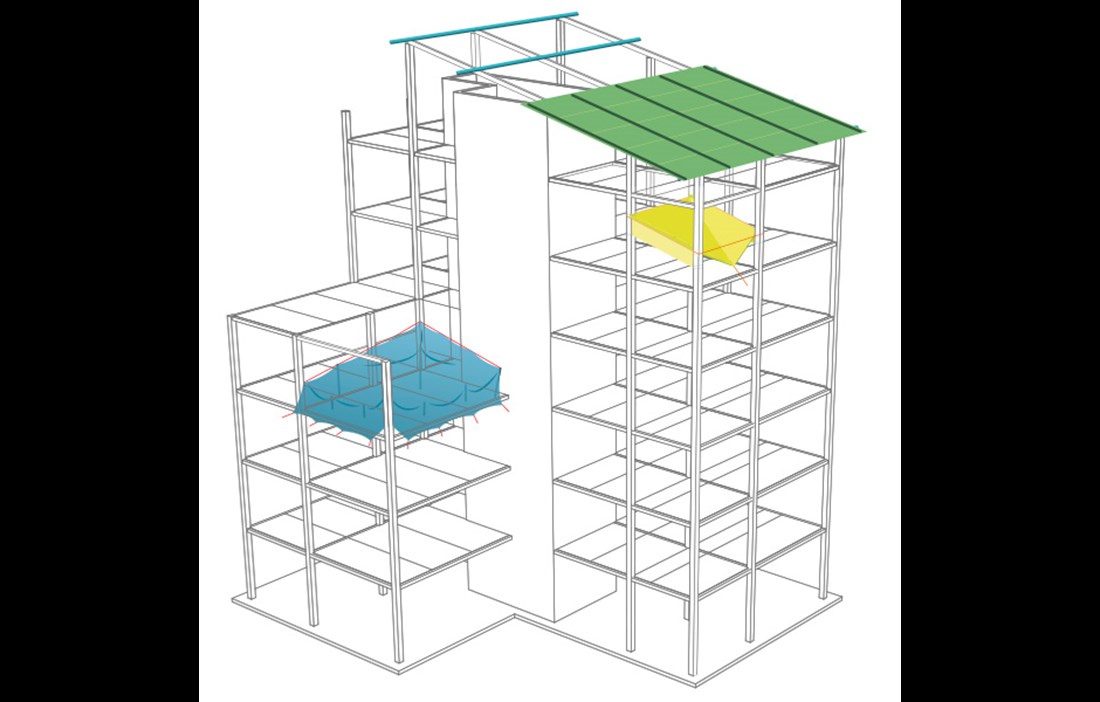SWEDISH BUILDING AGENCY Boverket has conducted several studies into the quality of indoor air. The focus has been on how the air affects our health and on emissions of volatile organic compounds that can have negative impacts on human health. One area studied was the damage caused by damp and mould. In the latest edition of Boverket’s building regulations (BBR) from 2006, the concept of critical moisture levels was introduced. There were, however, shortcomings in the definition. For example, it considered neither the temperature conditions, nor how long the material had been damp. These deficiencies in the building regulations gave the impression that it was no longer possible to build in wood.
The Swedish Forest Industries Federation therefore initiated a series of studies into moisture and mould on timber. The work was led by Björn Källander, a researcher at Stora Enso Wood Products who works on process and product development. A large number of Swedish sawmills, along with researchers at SP Trä, studied the moisture content of timber delivered from Swedish sawmills. Moisture changes and mould growth were then studied during storage, out in the industry and under laboratory conditions.
The purpose of the studies was to identify any variation in the moisture level, and to see how the moisture moves and under what conditions mould growth occurs. The results can form the basis for an assessment of mould growth caused by moisture in the timber on delivery, but they can also support recommendations on target moisture content during drying in order to avoid mould in the timber. In total, moisture content measurements were taken for more than 3,600 pieces of timber in 184 kiln dried batches from 13 sawmills. Nine plastic-wrapped packs of timber were also studied during two months of storage.
THE STUDIES SHOW how full-sized planks behave in reality, rather than how small samples react in the laboratory. The dried timber was packaged and wrapped in the same way as it would be in the sawmill. The surrounding climate was then measured with sensors inserted into the packages. The moisture content was measured before, during and after storage to see how the moisture migrates. The timber was then inspected by eye and under a microscope.
“The results are crystal clear,” asserts Björn Källander. “They show that the moisture in a plank that was dried to a target moisture content of less than 22 percent will not develop mould where the relative humidity is below 85 percent. The studies prove that if the timber used in a building is going to go mouldy, the moisture has to come from an external source.”
The results are now going to be assessed in collaboration with several researchers. Discussions with Boverket will then begin on how much the value for critical moisture levels can be raised. The aim is to agree on something more reasonable than the relative humidity figure of 75 percent that is used today. Results from the studies also indicate that the participating sawmills generally dry the timber to a lower moisture content than the 16 and 18 percent levels stated for the purpose of the studies. Most kiln operators dry the timber to slightly below the target moisture content of 16 percent, to ensure the correct moisture content on delivery.
“The studies set out in black and white that dry construction depends on the whole chain of events, from manufacture up to assembly and cladding, being protected from moisture – on structural components being manufactured in a dry factory environment and packaged properly for road transport to the construction site, and on assembly of prefabricated surface units taking place under shelter from the weather.”
Strandparken in Sundbyberg is Sweden’s first eight-storey building in wood, and it was designed and assembled by Martinsons on behalf of Folkhem. The box units were prefabricated in Västerbotten and delivered to Stockholm, where they were assembled vertically under Martinsons’ assembly system Extoler. This is a weatherproof scaffold with a platform for safe working and a gantry that replaces a crane. The system provides rational and quality-assured construction that also helps to create a safe workplace.
“Extoler is more of an assembly hall than a shelter,” says Thomas Staflund, sales manager at Martinsons. “Because it’s freestanding, you can quickly move up between the different floors. At one gable end there is an installation zone, where trucks can back in. Using the gantry, you can then lift the material undercover, which eliminates the risk of it getting damp.
Moelven Töreboda has worked with the company Boid, which has links to Chalmers University of Technology, to develop a new method of weather protection during construction. The method involves covering exposed and sensitive arts of the building, and having efficient planning that enables fast assembly.
“Our goal has been to develop a method that is reasonable and balanced, and thus cost-effective, practical and simple, with the required level of protection,” says Lennart Axelsson, head of development at Moelven Töreboda.
TEXT Katarina Brandt























